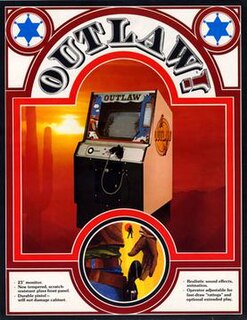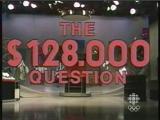| The Krypton Factor | |
|---|---|
| Presented by | Dick Clark (ABC) Willie Aames (syndication) |
| Narrated by | John Harlan (ABC) Laura Cody (syndication) |
| Country of origin | United States |
| Original language(s) | English |
| Production | |
| Running time | 22 minutes |
| Production company(s) | MCA Television Enterprises Alan Landsburg Productions (ABC) Kushner-Locke Productions Western International (syndication) |
| Release | |
| Original network | ABC (1981) Syndication (1990–91) |
| Original release | August 7–September 4, 1981 (ABC) September 15, 1990–September 7, 1991 (syndication) |
The Krypton Factor is an American game show based on the UK series of the same name. Contestants on the program were tested on their mental ability and physical skill.

A game show is a type of radio, television, or stage show in which contestants, individually or as teams, play a game which involves answering questions or solving puzzles, usually for money or prizes. Alternatively, a gameshow can be a demonstrative program about a game [while usually retaining the spirit of an awards ceremony]. In the former, contestants may be invited from a pool of public applicants. Game shows often reward players with prizes such as cash, trips and goods and services provided by the show's sponsor prize suppliers.

The Krypton Factor is a British game show produced by Granada Television for broadcast on ITV. The show originally ran from 7 September 1977 to 20 November 1995, and was hosted by Gordon Burns and usually broadcast on the ITV network on Mondays at 7pm.
Contents
The series had two separate runs. The first was a five-week limited series that aired on ABC from August 7 to September 4, 1981. The second was a weekly syndicated series that premiered on September 15, 1990 and ran until September 7, 1991.

The American Broadcasting Company (ABC) is an American commercial broadcast television network that is a flagship property of Walt Disney Television, a subsidiary of the Disney Media Networks division of The Walt Disney Company. The network is headquartered in Burbank, California on Riverside Drive, directly across the street from Walt Disney Studios and adjacent to the Roy E. Disney Animation Building, But the network's second corporate headquarters and News headquarters remains in New York City, New York at their broadcast center on 77 West 66th Street in Lincoln Square in Upper West Side Manhattan.
The original Krypton Factor was produced by Alan Landsburg Productions in association with MCA Television Enterprises and was hosted by Dick Clark. The revival was produced by Kushner-Locke Productions and distributed by Western International, with Willie Aames hosting.
Alan Landsburg Productions was an independent TV production company founded by Alan Landsburg in 1971. The company had produced In Search of... and That's Incredible!, two early examples of reality television decades before it became a confirmed genre. The company also found success in television movies, and scripted shows. They made a few theatrical movies as well, most notably Jaws 3-D (1983).
NBCUniversal Television Distribution (NUTD) is the television distribution arm of the NBCUniversal Television Group in the United States, and is a subsidiary of Comcast. Its predecessors include NBC Enterprises, Universal Domestic Television, MCA TV, Avco Embassy Television, Multimedia Entertainment, PolyGram Television, and Studios USA Television.

Richard Wagstaff Clark was an American radio and television personality, television producer and film actor, as well as a cultural icon who remains best known for hosting American Bandstand from 1957 to 1988. He also hosted the game show Pyramid and Dick Clark's New Year's Rockin' Eve, which transmitted Times Square's New Year's Eve celebrations. Clark was well known for his trademark sign-off, "For now, Dick Clark — so long!", accompanied by a facsimile of a military salute.












